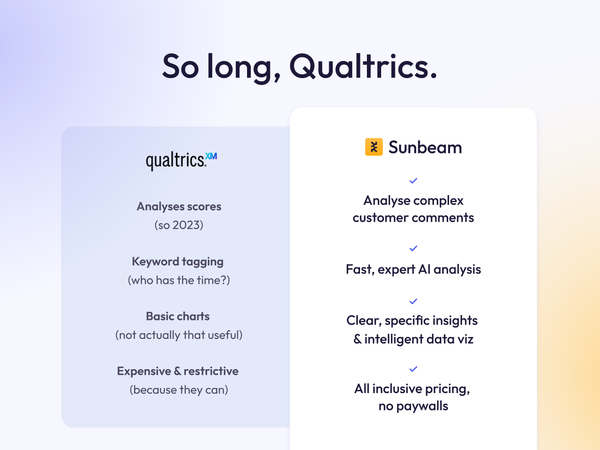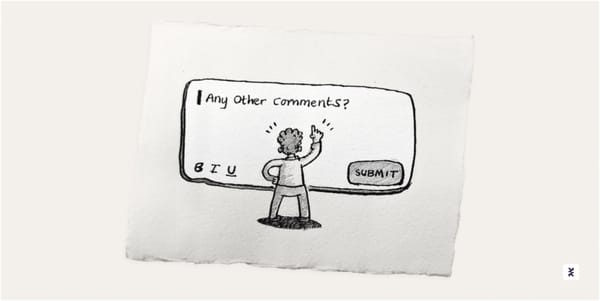'Voice of the Customer' - when there's millions of voices

We've been collaborating with customer experience teams across industries -including one of the UK's leading banks - to get under the hood of a shared, persistent challenge: making sense of qualitative customer feedback at a huge scale. Let's dig in to the challenge.
Understanding customer feedback at scale is hard.
If you're, say, a Voice of the Customer lead, a Customer Insight Manager, or a CX/UX Strategist - you're expected to distill clarity from a continuous stream of chaos. You're asked to unearth large-scale insights that inform major strategic decisions, while also pinpointing the small experience tweaks that shift key metrics. And you need to do it fast to be effective.
It's a daunting task; even a small change in the customer experience can have immense financial and reputational implications for your company.
So how do you effectively gain that deep understanding, when you have hundreds of thousands, or even millions of customers? It's hard. It requires long programmes of work to be set, involves teams of experts labouring over manual gruntwork, and a lot of personal interpretation.
Qualitative feedback certainly doesn't make any of it easy.
Open-ended text feedback is almost impossible to meaningfully analyse at scale.
Years ago I worked on a project for a UK non-profit, trying to get to the bottom of what their customers would need from a redesigned digital service. As part of this, we were given a spreadsheet of thousands of customer complaints, in the hope that something useful might be extracted from it. We read them. Some made for an entertaining read, but honestly, it wasn't possible to extract common insights from everything within the time and budget. The best we could have done in an automated way would be a word cloud or keyword count, which is just not useful enough.
We would approach that differently these days, of course. We might have dropped said document into a tool like NotebookLM or ChatGPT. It would give you a top-line summary, but it's not ideal. It's difficult to dig into the detail, and it doesn't exactly "show its working" to the thorough extent that you would need.
What's the scale of each issue? How severe is it? How many people mentioned it? Can I see the evidence/sources? Can I really rely on the results? Can I save this, and add more data to it later? How can I track the change over time?
And not to mention security concerns: Is the data you input being used to train a model? Who else can use it?
Although it's a great first step, these tools are clearly not built to meet these needs.
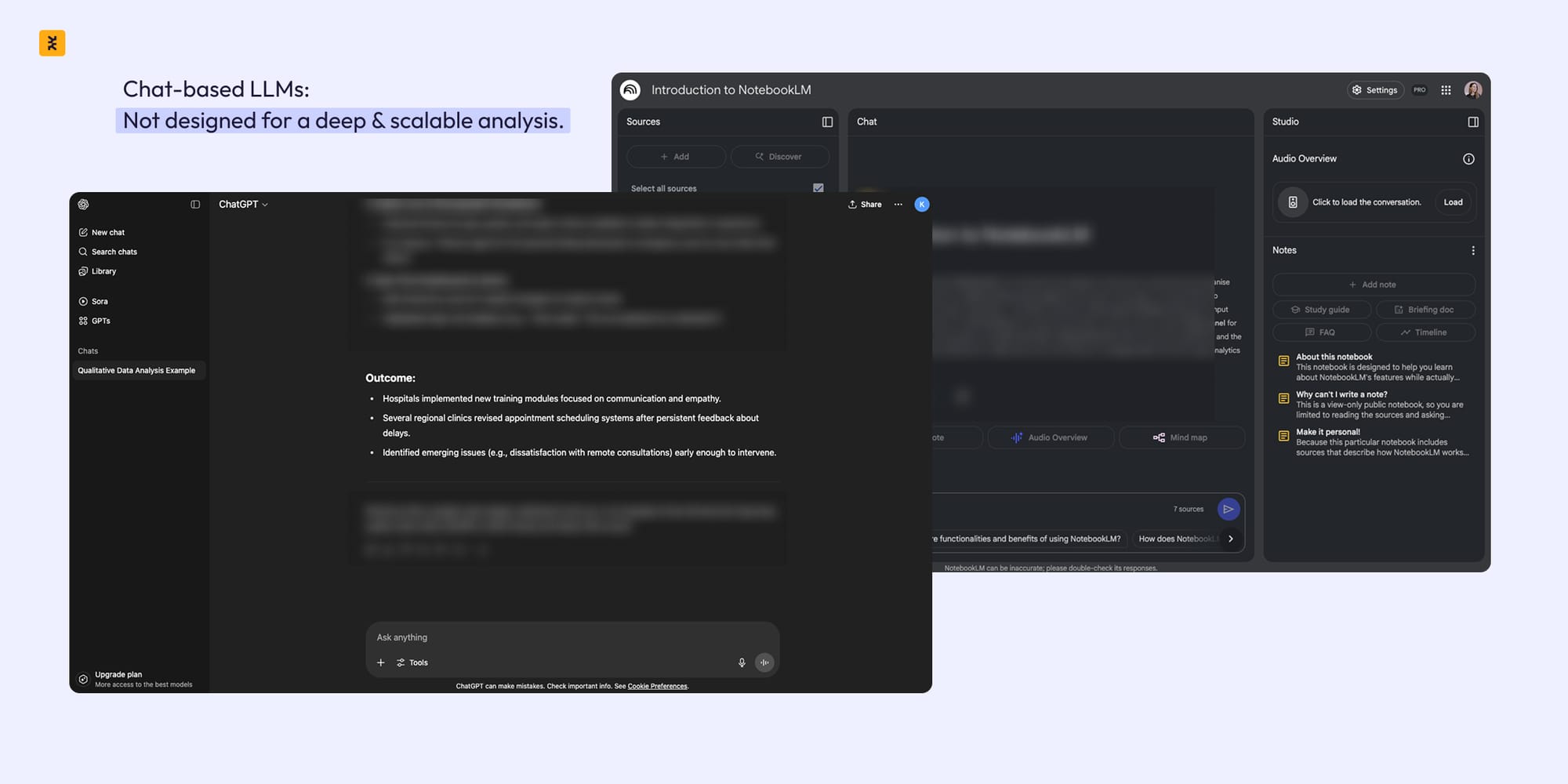
Customer feedback comes in completely different silos, different formats, and is hard to extract.
It arrives from every direction: surveys, chat logs, call transcripts, social media monitoring, app reviews, trustpilot reviews... all in different formats, and housed in siloed systems.
You ask one team to gather the feedback from social media. You export your latest batch of chat logs, and responses from your latest customer satisfaction survey. Then your latest app store reviews. All for analysis at the same time.
All the while, more feedback comes in, issues are overlooked, and customer opinion moves on.
In an attempt to cope with feedback volume, answers are often contrived into formats that don’t allow for nuance.
To cope, many organisations have simplified feedback into rigid categories or metrics that strip out the very insight they need.
"Rate this app from 1-5"
"Was this page helpful? Yes/No"
Similarly, current tools used across industries focus heavily on scores. Customer satisfaction scores, NPS, or similar. They are of course, useful for measuring progress - but it doesn't help you find out what the issues actually are. That then requires further (manual) detective work.
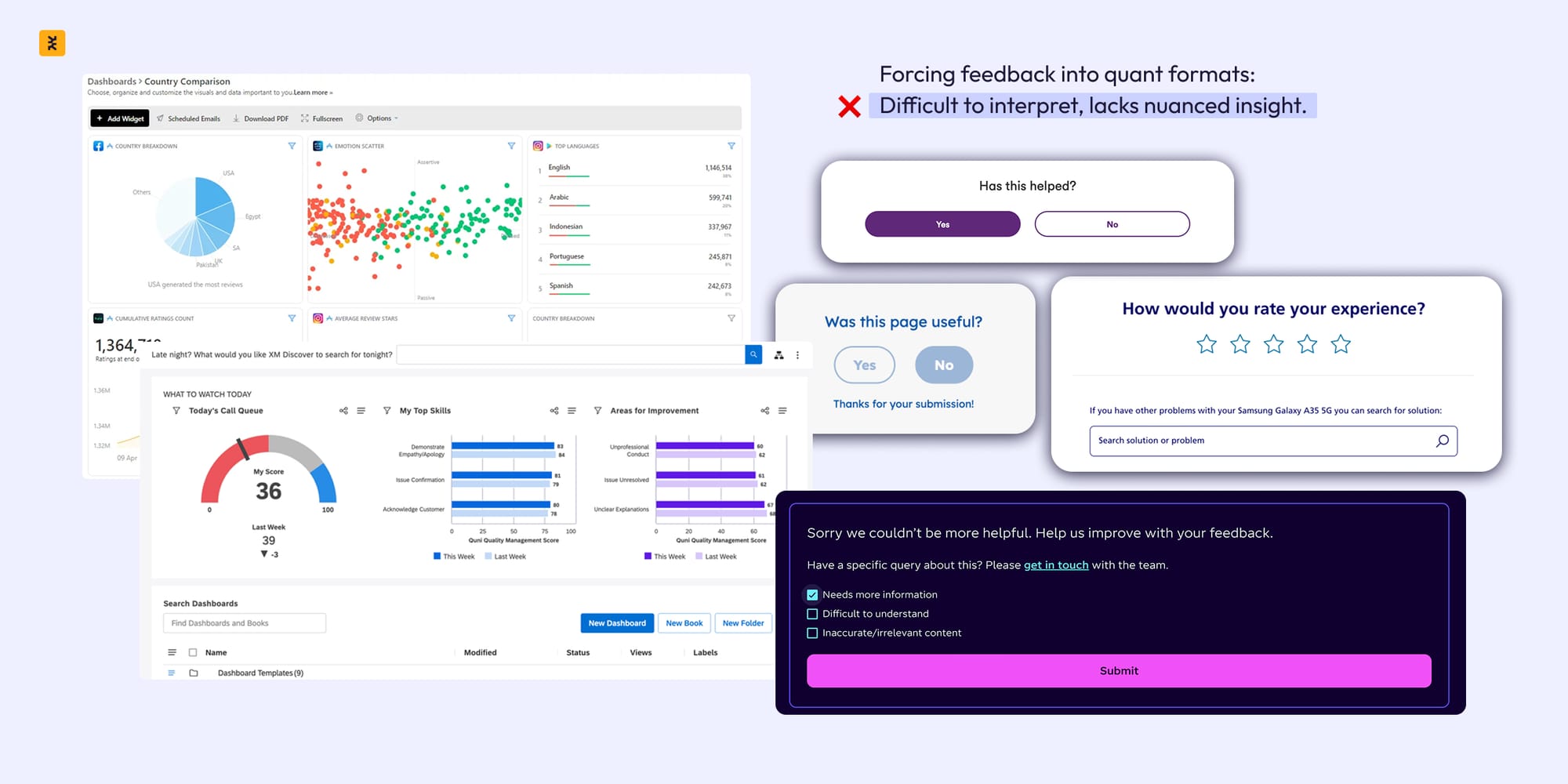
It all needs significant manpower and time to manually synthesise this into opportunities and issues.
Collecting, gathering into themes, analysing, reporting... How much time does that take? How many man-hours are spent on each stage of this process?
And by the time you've finished, have you acted fast enough to nip issues in the bud?
So - what's the ideal solution?
We think there's definitely a gap for a tool that lets you:
- Get on top of all your customer feedback, centralised in one place
- Get clear, actionable insights from your customers, with clear volume metrics
- Gather a list of all your user requests
- Save time & be able to react quickly to new feedback trends
- Be able to see what directly impacts your KPIs
- Be able to tell powerful, data-backed stories that drive change for your customers
- And to do this in the easiest way possible - quick to adopt, without having to learn a new, complicated tool.
But what have we missed? What else would this tool need?
(pssst... by the way - we're building it!)
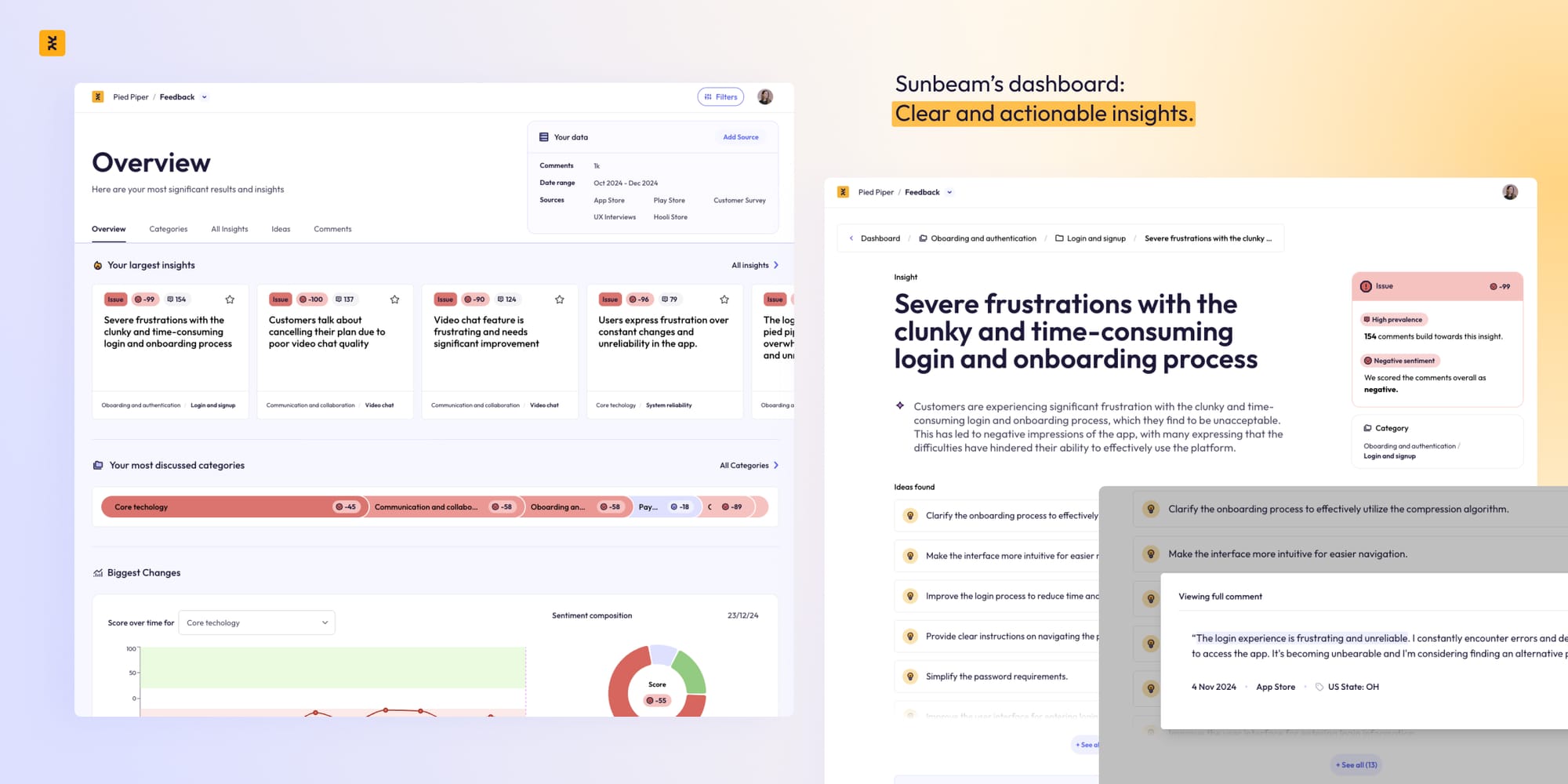
At Sunbeam, we're building a feedback analytics platform primarily focused on the deep analysis of qualitative data. We’re interested in solving the problem of how teams manage and make sense of customer feedback at scale, cut through the manual work and get straight to the heart of what their customers were saying and asking for.
We're always open to learning more about this problem! If you're experiencing a challenge like this, we'd love to hear from you.
Help us build the future of feedback - Get in touch 😊


